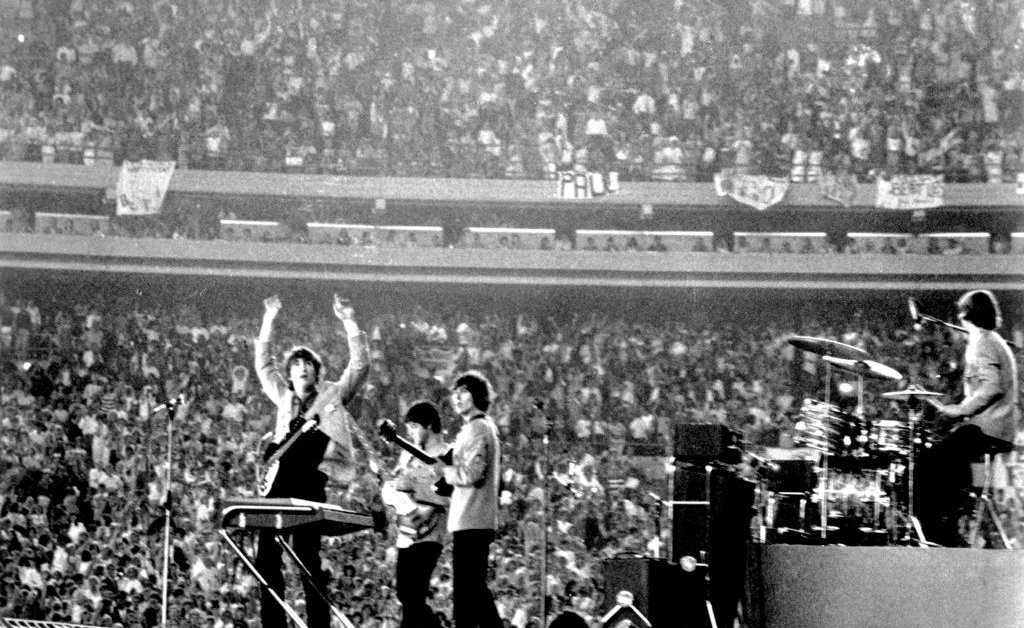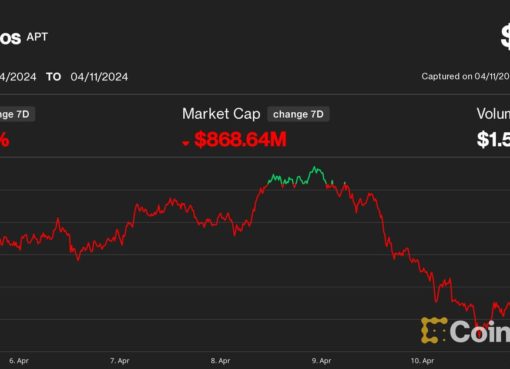August 15, 2025 marks the 60th anniversary of a pivotal moment in live music history: The Beatles’ infamous performance at Shea Stadium. What began as an unprecedented attempt to accommodate the Fab Four’s overwhelming popularity has evolved into a touchstone of pop culture—the modern stadium tour. Today’s stadium concerts are more than just supersized live shows; they have become cultural phenomena and socio-economic markers. Perhaps most intriguingly—at least to me—they are also neuroscientific experiments in mass synchronization.
In 1965, pop music’s demographic was dominated by teenagers with disposable income and a desire to break the self-imposed boundaries of their post-Depression-era parents. The Beatles’ audience at Shea was overwhelmingly young, predominantly female, and distinctly American. In the decades since, stadium audiences have expanded in every conceivable way. Through the ’80s and ’90s artists like U2, Madonna, and Michael Jackson drew increasingly global, multi-generational crowds. Today, truly global music acts like BLACKPINK and Bad Bunny play to stadium audiences worldwide, reflecting the increasing multicultural appeal of contemporary music. And touring artists like Bruce Springsteen, Paul McCartney, Cyndi Lauper, and The Rolling Stones now draw in new followers aside lifelong fans, with three generations of family members often attending together.
Fandom itself has transformed. Where fans once relied on the vagaries of radio play and magazine spreads to engage with their favorite artists, today’s fans form tightknit communities on social media platforms like TikTok and Discord. Through these digital spaces, enthusiasts exchange theories, share memes, decode Easter eggs, and coordinate elaborate travel plans and ticket-buying strategies months in advance. The shift from passive consumption to active participation has transformed how fans engage with pop music, turning concerts into global events that have expanded well beyond geography and generations.
Yet this evolution has created new challenges, chief among them, the skyrocketing cost of being part of the experience. We’ve gone from $5.10 to see the Beatles at Shea Stadium to Eras Tour tickets with face values ranging from $49 to $449 reselling for up to $20,000 on StubHub and SeatGeek.
When my mother wanted to surprise me with tickets to Bryan Adams’ Waking Up The Neighbours Tour in 1992, she lined up at the physical box office hours before opening with other eager fans. She forked over $42.50 for two, side-view seats in the lower bowl. Compare that to last year when I battled bots and refreshed my browser every few milliseconds in the hope of scoring four tickets to Olivia Rodrigo’s GUTS World Tour before they soared to mortgage-level proportions. By some miracle, I was able to take my three teenage daughters to their first arena show for a relatively low $600. They’re now saving their babysitting money and diligently tracking price trends for Benson Boone’s American Heart Tour while I’m (half) considering dipping into their college fund to see Bryan Adams again this fall.
At what point does the price of admission outweigh the joy of participation?
When it came to the Eras Tour, like many other disappointed Swifties, we had to settle for movie screenings and grainy live feeds. Swift didn’t stop in our hometown of Montreal. We considered travelling to Toronto, Boston, New York, or Philadelphia. When calculating the costs—tickets, travel, accommodations, meals—our cheapest option turned out to be Lisbon, Portugal. That three-day excursion would have set us back about $6,000 CAD. While that was substantially less than the resale tickets in any nearby city, the financial cost and complicated logistics of participation were too great.
Economists often argue that high ticket prices are simply a reflection of market forces—artists, and resellers, can charge more because demand far outstrips supply. Sociologists counter that this trend deepens cultural divides, turning concerts into exclusive experiences for the financially privileged. Despite the costs, stadiums continue to sell out at record speed, raising the question: what is it about live music that makes us willing to pay such a premium? Is it the music itself, the sense of community, or something even more basic?
For 30 years, our lab has been exploring why music moves us—literally and figuratively. Many of our studies focus on memory for music, demonstrating that people have a remarkable ability to recall melodies, pitch, tempo, and loudness with surprising accuracy, even without formal music training, suggesting that musical memory operates differently from other forms of memory. We conducted some of the first neuroimaging studies to map the brain’s response to music—showing how it lights up the brain, engaging areas responsible for hearing, memory, movement, and emotion all at once. This is why a song can transport you back to a specific moment in time, evoking vivid memories and emotions. Our studies show that when people listen to music they love, it activates brain regions associated with pleasure and reward, helping to explain why a favorite song can feel as satisfying as a good meal or a warm hug. Music’s ability to give you chills and make you feel euphoric is tied to the release of natural opioids in the brain, the same chemicals that help relieve pain.
Years ago, our lab showed in brain scans that listening to the same piece of music caused people’s brain waves to synchronize. Recent studies conducted in real-time, in concert halls, demonstrate that people enjoy music more when the performance is live and experienced as part of a group. Live music triggers stronger emotional responses than recorded music due to the dynamic relationship between the audience and the performers. The visual cues, collective energy, and real-time responsiveness of live music engage more sensory and emotional systems than listening alone, deepening our visceral connection to the experience. Attending a concert is associated with increases in oxytocin, a bonding hormone, enhancing our sense of social connection. When we move together to music—clapping, swaying, or singing in sync—we engage neural circuits involved in motor coordination, empathy, and social prediction, reinforcing our sense of being part of a group. We’re literally on the same brainwave!
What ties all this together is the simple but profound idea that music is more than just entertainment. From the joy of discovering a new banger to the comfort of an old, familiar tune, music may well be a biological necessity, a fundamental part of being human, wired into our brains and bodies in ways that shape how we think, feel, and connect with one another.
Our innate desire for connection might also, in part, explain why a friendship bracelet exchange (inspired by Swift’s You’re On Your Own Kid) is trending at modern stadium shows: the simple act of swapping beaded bracelets cultivates a microcosm of human connection within a macro-scale experience. It’s a ritual that transforms a crowd of thousands into an intimate community, where strangers become momentary friends, bound by shared enthusiasm and a tangible token of group membership. It’s a small, tactile gesture that taps into our deep-seated need to bond, to feel seen, and to belong. In a world where digital interactions often replace physical ones, these trinkets are a reminder of the power of touch, of giving, and of creating memories that extend beyond the concert itself. Music has always been a social glue, a way for humans to synchronize their emotions and movements, whether around a Neanderthal campfire or in a packed stadium. And in an era of increasing isolation, these moments of connection feel more vital than ever. Making friendship bracelets to share with your fellow Swifties may be part of the solution.
But today’s stadium shows aren’t just about emotional connection or even entirely about the music—it’s also a masterclass in sensory stimulation. The Beatles may have pioneered the stadium format, but their setup was quaint by today’s standards. Early stadium shows featured little more than musicians standing in front of a static backdrop, struggling to project their sound through subpar sound systems designed for sports announcers, not music. By the 1980s, technological advancements had changed the game. Pink Floyd’s The Wall Tour in 1980 set a new standard for large-scale stage production, with elaborate sets, visual projections, and theatrical storytelling. U2’s Zoo TV Tour in 1992 introduced multimedia screens that transformed the stage into a digital playground. More recently, Taylor Swift’s Eras Tour involved 70,000 wristbands pulsing in unison, and stage sets transforming from slithering snakes to whimsical fairy-tale forests to cinematic cityscapes. And Beyoncé’s 2023 Renaissance Tour incorporated cutting-edge robotics and high-fashion couture, proving that stadium concerts can be as much about visual effects as they are about the music.
While many fans view these advances as improvements, others argue that the intimacy and simplicity of early stadium shows have faded, and been replaced by a commercialized, high-stakes industry. The Outlaws Roadshow stadium tour in 2012 left me feeling as though I had overpaid for a lights and lasers show that happened to include the Counting Crows phoning it in somewhere in the background. In the pursuit of grandeur, has some of the raw, unfiltered magic of live music been diluted?
And what does all this mean for the future of live music? If the past 60 years of stadium shows (and tens of thousands of years of human music-making) have taught us anything, it’s that music, at its core, is about shared experience. We crave the pulse of the bass beneath our feet, the collective chant of a catchy chorus or killer bridge, the unspoken understanding between strangers who, for just one night, are part of something bigger than themselves. As technology continues to evolve and fan communities grow more interconnected, one thing is certain: the stadium concert will remain a space where we come together, not just to listen, but to belong.




